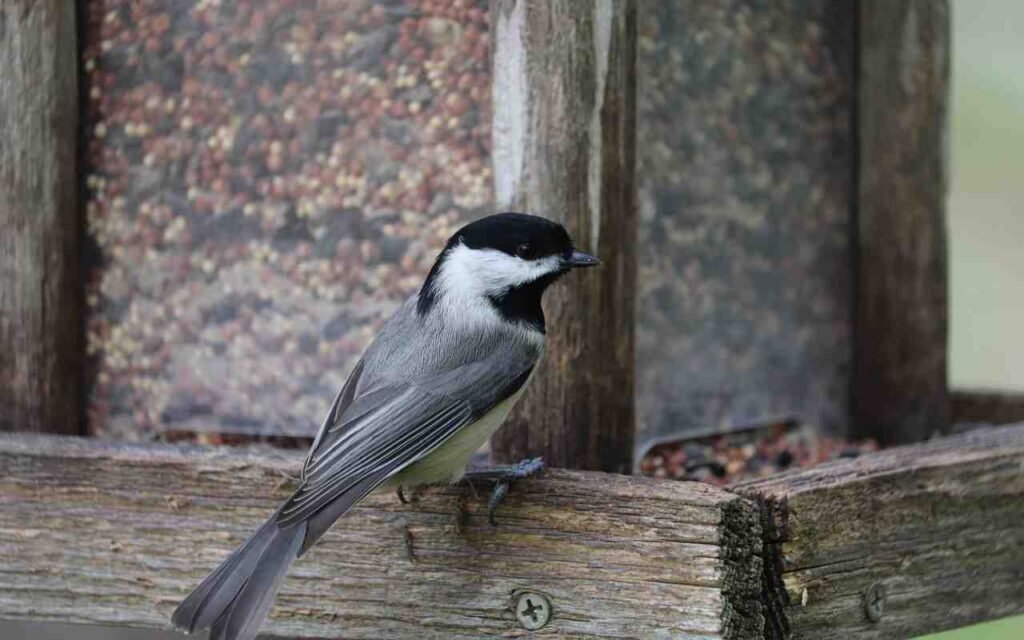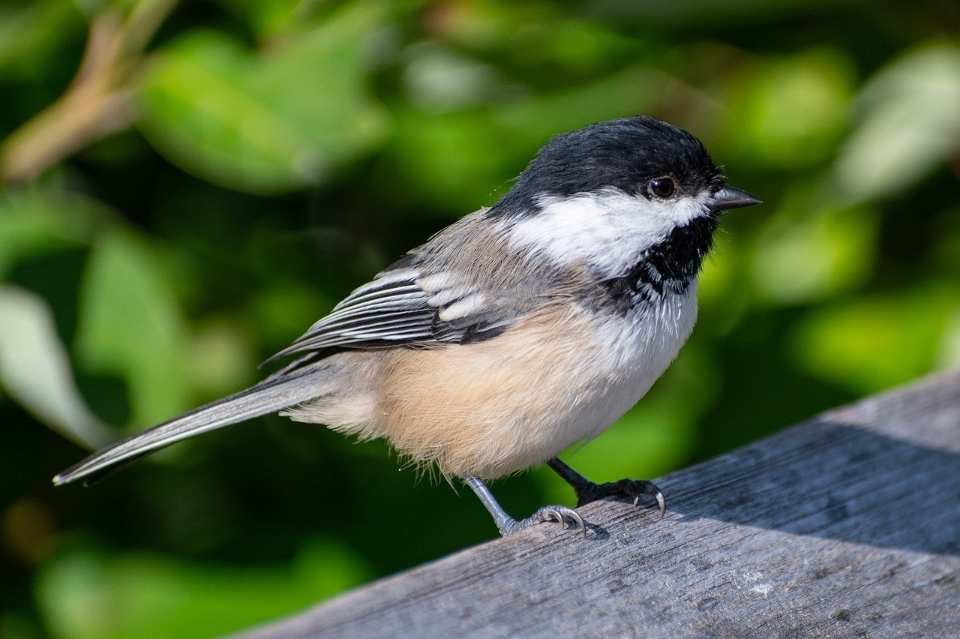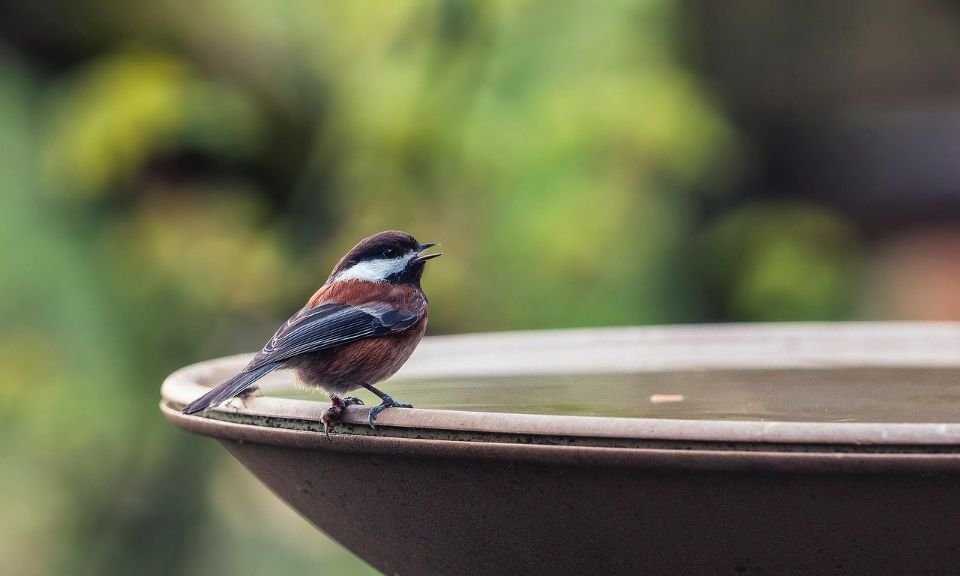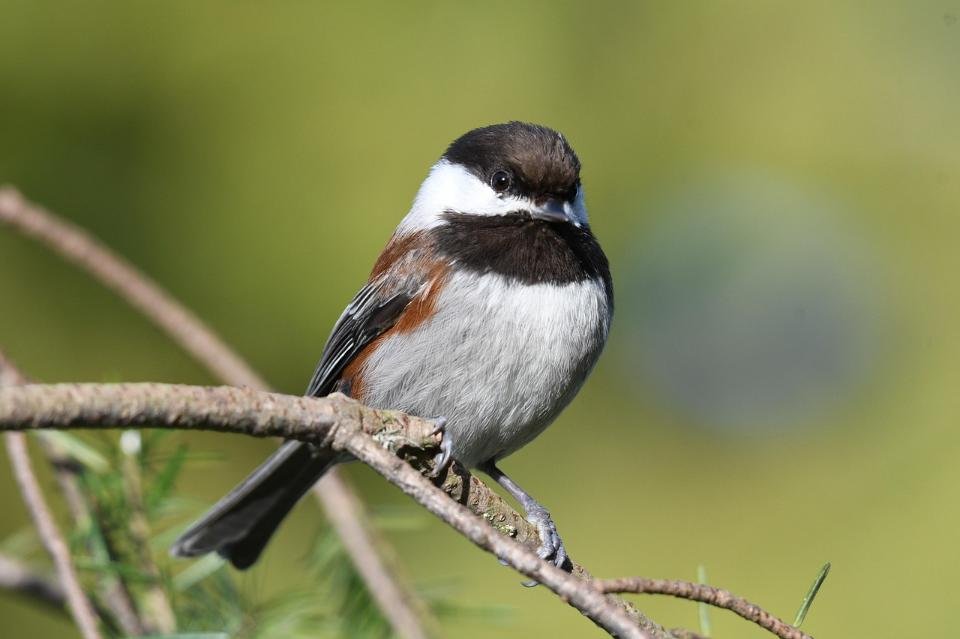When I moved in, I didn’t expect much, but within three days chickadees were already darting around my yard like they owned the place 😊. Curious how to attract chickadees to your yard? It’s easier than you’d think.
These little birds are full of energy and personality, and once they start visiting regularly, they become the highlight of every day. Over time, I learned which feeders, seeds, and little tricks really get them to stick around, and which ones don’t.
Why Chickadees Are Worth the Effort
Before we get into the how, let’s talk about the why. Chickadees aren’t just cute (though they absolutely are). These birds are incredibly smart, remembering thousands of food cache locations throughout winter. They’re also fearless, often being the first birds to investigate new feeders or approach humans.
I’ve had chickadees land on my hand while I was filling feeders. That moment when a wild bird trusts you enough to perch on your finger? Pure magic. You can’t buy that kind of experience.
Chickadees stick around year-round in most regions too. Unlike fair-weather bird friends who disappear for months, chickadees are loyal. They’ll visit your yard in blazing summer heat and brutal winter cold. That consistency makes them the perfect birds to attract if you’re just starting your backyard bird journey.
Understanding Chickadee Basics
Chickadees belong to the Paridae family, and several species exist across North America. According to All About Birds, Black-capped chickadees dominate northern regions, while Carolina chickadees rule the Southeast. Mountain and chestnut-backed chickadees hang out in western areas.
Here’s what you need to know: all chickadee species share similar habits and preferences. They’re small, acrobatic, social, and food-motivated. They communicate constantly with each other using their distinctive calls. That “chick-a-dee-dee-dee” sound? That’s literally how they got their name.
Learning how to spot chickadees in your yard is pretty straightforward. They’re small birds with round bodies, black caps and bibs, white cheeks, and grayish backs. They move constantly, rarely sitting still for more than a few seconds. If you see a tiny bird doing gymnastics on a tree branch, that’s probably a chickadee.
Food: The Foundation of Chickadee Attraction
Let’s be real. The fastest way to a chickadee’s heart is through its stomach. These birds are eating machines, consuming up to 35% of their body weight daily. During winter, that number climbs even higher because they need massive calories to survive cold nights.
The Best Bird Food for Chickadees
Black oil sunflower seeds are chickadee gold. I buy these in bulk because my chickadees demolish them faster than I can refill feeders. The seeds have thin shells that small beaks crack easily, plus they’re loaded with fat and protein.
Chickadees also go crazy for peanuts. I use unsalted, shelled peanut pieces mixed with my sunflower seeds. Watch a chickadee grab a peanut chunk and you’ll see pure joy. They take one piece, fly to a tree, hammer it against a branch to break it down, then come back for more. It’s adorable and efficient.
Suet is non-negotiable for winter feeding for chickadees. This high-fat food provides essential energy during freezing temperatures. I hang suet cakes in late October and keep them available until spring. My chickadees hit the suet feeder first thing every morning, fueling up for the day ahead. If you want to make your own, here’s how to make suet cakes for birds.
Seed Mixes Chickadees Like (and Don’t)
Not all birdseed mixes are created equal. Cheap mixes contain mostly filler seeds that chickadees ignore completely. You’ll end up with piles of discarded milo and wheat under your feeders while birds search for the good stuff. The Audubon Society recommends sticking to high-quality seeds like sunflower and safflower to actually attract birds. For more ideas, check out these common backyard birds that visit feeders.
Look for premium mixes containing sunflower seeds, peanuts, safflower, and nyjer. Skip anything loaded with red milo, wheat, or oats. IMO, mixing your own blend gives you better value and lets you customize for your specific birds.
I learned this lesson the hard way after buying a “bargain” 40-pound bag that my birds refused to touch. Forty pounds of bird-rejected seed sitting in my garage taught me that cheap isn’t always a deal.
Setting Up Feeders That Actually Work
Feeders are critical infrastructure for attracting backyard songbirds. But not just any feeder will do. Chickadees have specific preferences, and choosing the right types of bird feeders for small birds makes all the difference.
Tube Feeders: Chickadee Favorites
Tube feeders with small perches are perfect for chickadees. The design allows them easy access while keeping out larger, more aggressive birds. I use tube feeders with metal components because squirrels destroyed my plastic versions in record time.
Make sure your tube feeder has drainage holes. Wet seed develops mold quickly, and moldy seed can make birds sick. Nobody wants that responsibility.
Hopper Feeders for Variety
Hopper feeders protect seed from weather while offering easy access. Chickadees love these because they can land, grab food, and leave quickly. That grab-and-go behavior is classic chickadee style.
I keep one large hopper feeder that attracts multiple species. Chickadees share surprisingly well with other birds, darting in between larger visitors. Their confidence is honestly impressive considering they weigh less than half an ounce.
Suet Feeders for Winter
Wire cage suet feeders are simple but essential. I hang mine from tree branches where chickadees can approach from multiple angles. They love hanging upside down while eating, which is both functional and entertaining to watch.
Get suet feeders with tail props if larger birds become a problem. Chickadees handle upside-down feeding easily while bigger birds struggle.
Platform Feeders for Observation
Platform feeders offer great viewing opportunities. I mounted one outside my kitchen window specifically for close-up chickadee watching. These open feeders give chickadees clear sightlines to spot predators, which makes them feel safer.
The downside? Platform feeders expose food to weather. Clean them regularly and don’t overload them with seed that might get wet.
Strategic Feeder Placement
You can have the perfect feeder filled with premium seed, but terrible placement ruins everything. Location matters enormously when creating chickadee-friendly backyard tips that actually produce results.
The 10-Foot Rule
Place feeders about 10–12 feet from trees or shrubs as part of a bird-friendly garden design. This distance gives chickadees escape cover without providing ambush opportunities for predators, a placement strategy also suggested by the National Wildlife Federation.
Cats especially love using nearby bushes as launching pads. My neighbor’s cat learned this the hard way. I mean, the chickadees learned it. The cat just got frustrated and eventually gave up hunting my feeder.
Height Considerations
Mount feeders at least five feet high. Chickadees prefer feeding at eye level or above, and this height keeps ground predators from easy access. My best feeder hangs from a branch about six feet up, perfectly positioned for both bird safety and human viewing.
Multiple Feeding Stations
Don’t put all your eggs in one basket. Or seeds in one feeder, rather. Multiple feeding stations spread throughout your yard reduce competition and give chickadees options. I run four feeders in different areas, and chickadees rotate between them constantly.
This setup also helps during peak feeding times. Instead of birds waiting in line (yes, they actually do this), multiple stations accommodate more birds simultaneously.
Water: The Overlooked Essential
Everyone focuses on food, but water attracts chickadees just as effectively. Birds need water for drinking and bathing year-round. A reliable water source makes your yard significantly more appealing. I added a simple birdbath three years ago, and chickadee visits increased noticeably within weeks. They drink, bathe, and socialize around the water.
It’s like a tiny bird community center. Keep water fresh and clean. Change it every few days, and scrub the bath weekly with a brush. Dirty water spreads disease, and chickadees remember which water sources are safe.
During winter, consider a heated birdbath so water doesn’t freeze. My heated bath sees constant traffic during cold snaps when natural water sources disappear. And if you’re wondering about upkeep, here’s how to clean a bird bath without chemicals.
Creating Natural Habitat
Feeders and water are great, but chickadees need more than handouts. Creating actual habitat transforms your yard from a drive-through restaurant into a proper home.
Plant Native Trees and Shrubs
Native plants evolved alongside chickadees, providing natural food and shelter. Wild Birds Unlimited notes that using native species supports both insects and berries, creating lasting habitat that attracts chickadees. I planted serviceberry bushes, native dogwoods, and black cherry trees. These plants produce berries and attract insects that chickadees devour.
Native plants also require less maintenance than exotic species. They’re adapted to local conditions, need less water, and support entire ecosystems of insects that feed birds. It’s a win all around.
Leave Dead Trees Standing
Dead trees (snags) are chickadee gold mines. These trees harbor insects for foraging and provide nesting cavities. I have a dead oak in my backyard that my HOA hates but chickadees absolutely love.
Obviously, remove dead trees that pose safety hazards. But if a dead tree stands safely away from structures, consider leaving it. The wildlife value is enormous.
Embrace a Little Mess
Perfect lawns are biological deserts. Chickadees need leaf litter, fallen branches, and natural debris. These areas harbor insects and provide foraging opportunities.
I stopped raking one corner of my yard, and it became the most popular bird area on my property. My neighbors probably think I’m lazy, but the chickadees know I’m brilliant 🙂
Nesting Opportunities
Chickadees are cavity nesters, meaning they nest in holes in trees. Natural cavities are increasingly scarce, so providing nest boxes helps enormously.
Choosing the Right Nest Box
Chickadee nest boxes need specific dimensions. The entrance hole should be 1.25 inches in diameter, small enough to exclude larger birds but perfect for chickadees. The interior floor should be about four inches square, with a depth of 8-10 inches.
I mounted two nest boxes in my yard, and chickadees used both within the first season. Watching them carry nesting material back and forth was surprisingly entertaining. They’re incredibly diligent builders.
Placement Matters
Mount nest boxes 5-15 feet high on trees or poles. Face the entrance away from prevailing winds and direct sun. Chickadees prefer some shade, especially during hot summer months when babies are in the nest.
Position boxes at least 20 feet apart if you’re installing multiple units. Chickadees are territorial during nesting season and won’t appreciate neighbors too close.
Timing and Maintenance
Install nest boxes in fall or early winter. This gives chickadees time to discover them before spring nesting season. They’ll also use boxes for roosting during cold winter nights, which helps with survival.
Clean nest boxes after each nesting season ends. Remove old nesting material in late fall to prevent parasite buildup. FYI, this is gross but necessary. I wear gloves and try not to think too hard about what I’m handling.
Seasonal Strategies
Chickadees have different needs throughout the year. Adjusting your approach seasonally keeps them happy and coming back.
Spring: Nesting Season
During spring, chickadees hunt protein-rich insects to feed babies. They’ll still visit feeders, but traffic may decrease slightly. Keep feeders stocked but focus on providing nesting materials and habitat.
I leave out pet hair (from brushing my dog) and natural plant fibers. Chickadees collect these materials for nest building. It’s like running a bird hardware store.
Summer: Family Time
Summer brings fledgling chickadees, and they’re hilariously awkward. Young chickadees flutter around feeders begging adults for food even though they’re perfectly capable of feeding themselves. It’s like watching teenagers who still can’t do their own laundry.
Keep feeders clean during summer. Heat and humidity promote mold growth, so vigilance matters more than ever.
Fall: Preparation Mode
Fall is caching season. Chickadees frantically store food for winter, visiting feeders constantly. They’ll grab seeds and hide them in bark crevices, under leaves, and in countless other spots. Their spatial memory is genuinely remarkable.
Increase the amount of food you provide in fall. Help chickadees build their winter stores. They’ll remember your generosity (literally, their memory is that good).
Winter: Survival Support
Winter feeding for chickadees is critical. Michigan Audubon recommends providing high-fat foods like suet and sunflower to help small birds survive freezing nights. When temperatures plummet and natural food disappears, your feeders become survival tools. Keep them full and accessible even during storms.
I check feeders daily in winter. Sometimes snow buries them overnight, and chickadees arrive at dawn expecting breakfast. Clearing snow takes five minutes but makes an enormous difference for birds burning calories to stay warm.
One particularly brutal winter, I watched the same chickadee group visit my feeders every morning like clockwork. Seeing them survive because of food I provided felt incredible. It’s why I keep doing this, honestly.
Common Mistakes to Avoid
I’ve made basically every mistake possible. Learn from my failures and skip the trial-and-error phase.
Inconsistent Feeding
Once chickadees incorporate your feeders into their routines, keep them filled. These birds travel established routes checking reliable food sources. Empty feeders waste their energy and break trust.
I ran out of seed once during a cold snap and felt guilty for days. The chickadees gave me serious side-eye when I finally refilled everything.
Dirty feeders spread disease. All About Birds recommends cleaning feeders every two weeks (or more often in wet weather) with a 10% bleach solution to protect bird health. Rinse thoroughly and dry completely before refilling. Same goes for birdbaths.
I got lazy about this once, and my feeders developed mold. Chickadees stopped visiting entirely until I cleaned everything. They’re not stupid, and they won’t risk their health on sketchy food sources.
Ignoring Predators
Cats and hawks love chickadees as much as you do, just in a very different way. Keep domestic cats indoors, and position feeders where predators can’t stage ambushes.
I had a hawk problem last winter. The hawk figured out my feeding schedule and started hunting accordingly. I moved feeders to more covered areas, and the chickadees found them within hours. Problem solved.
Using Pesticides
Pesticides kill insects that chickadees need. Even if you’re not spraying near feeders, pesticides affect the entire food web. Chickadees eat poisoned insects and accumulate toxins.
Go natural with yard care. Your chickadees (and your own health) will thank you. Learn more about the impacts of pesticides on wildlife at Beyond Pesticides’ Wildlife Program.
Building Long-Term Relationships
Here’s something cool about chickadees: they recognize individual humans. Research proves they can distinguish between different people and remember who’s friendly. That means you can actually build relationships with your chickadee visitors.
I whistle when I fill feeders. After a few months, chickadees started responding to my whistle even when I wasn’t near feeders. They’ve learned to associate that sound with food and safety.
Some chickadees in my yard will approach within a few feet now. They don’t fear me because I’ve proven I’m not a threat. Building this trust takes time, but it’s worth every minute.
The Bigger Picture
Attracting chickadees to your yard contributes to conservation. Urban sprawl destroys habitat constantly, and every yard providing food, water, and shelter helps offset that loss. You’re creating tiny wildlife refuges in residential areas.
Chickadees also indicate ecosystem health. Healthy chickadee populations suggest your area supports diverse insects, plants, and other wildlife. By helping chickadees, you’re supporting entire ecological communities.
Plus, chickadees eat tremendous quantities of insects, including pests that damage trees and gardens. They’re natural pest control that works better than any spray and costs nothing except some birdseed.
Your Chickadee Adventure Starts Now
Attracting chickadees isn’t complicated. Provide good food, clean water, safe shelter, and a little patience. Start with a basic tube feeder filled with black oil sunflower seeds. Add a birdbath. Plant a native shrub or two. That’s honestly enough to begin.
Once chickadees discover your yard, word spreads fast. These social birds communicate constantly, and one chickadee tells another about your excellent setup. Before long, you’ll have regular visitors that brighten every day.
Fair warning: chickadee watching becomes addictive. You’ll find yourself checking feeders obsessively, identifying individual birds by subtle differences, and boring everyone with chickadee stories. I speak from extensive personal experience here.
But watching chickadees is genuinely therapeutic. Their energy and fearlessness remind me that small creatures can thrive in big worlds. They face hawks, winter storms, and countless challenges, yet they keep showing up every day with that characteristic enthusiasm.
So set up those feeders, fill that birdbath, and get ready to meet your new neighbors. The chickadees are waiting, and I promise they’re worth every bit of effort. Now if you’ll excuse me, I need to refill my feeders. Again.





